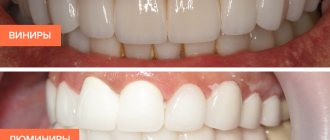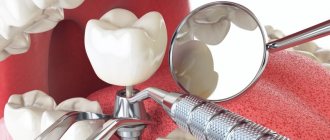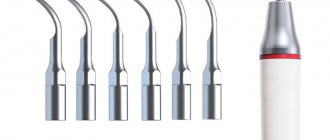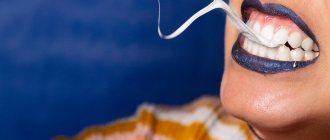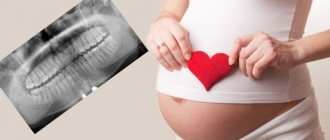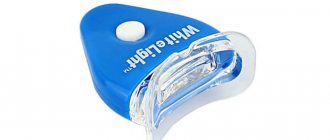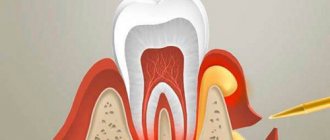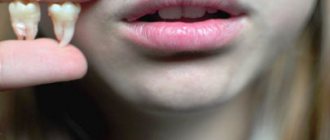Normally, a person grows 52 teeth over a lifetime: 20 milk teeth and 32 permanent teeth. Supernumerary teeth are “extra” dental units that appear in addition to some incisors, canines, premolars or molars. In various medical sources, the phenomenon is called hyperdontia, supradontia or polyodontia. A superset can include 1–2 teeth or reach several hundred dystopic structures, be true or false.
Supernumerary teeth: causes of anomaly
The main cause of polyodontia is a violation of the formation or development of tooth germs. Doctors are considering several theories for this phenomenon:
- Heredity – hyperdontia develops as a result of genetic abnormalities that can be transmitted from parents to children. In this case, the pathology should manifest itself in the patient’s closest blood relatives.
- Splitting of the root germ of the tooth in the embryonic period of development. Usually observed after the mother becomes ill during pregnancy. Characteristic of single supernumerary teeth (1–2 pcs.).
- Failure during the embryonic period of tooth formation with the formation of multiple dental buds (up to several hundred). It is observed when the mother lives in unfavorable environmental conditions, during treatment with dangerous drugs, taking drugs, or alcohol abuse.
In more rare cases, polyodontia develops as a result of odontoma, a benign tumor in the area of the jaw arches. The disease is typical for children and young people during the period of active growth of tooth germs. Such a tumor structure may contain several tens or even hundreds of highly deformed dentin-enamel formations.
Provoking factors in the prenatal period:
- malfunction of genes - primarily the Msx1 gene (responsible for the formation of tooth germs);
- viral infections;
- taking teratogenic and potentially dangerous drugs;
- smoking, drug use, alcohol use;
- poor environmental conditions;
- exposure to radiation - not only direct exposure, but also increased general background radiation in the place of residence/work.
Reference! Some scientists consider the presence of supernumerary teeth as an atavism. Thus, it has been scientifically proven that various species of the genus Homo could boast a set of teeth of 36–44 pieces. However, this theory does not explain in any way the appearance of multiple rudiments covering all spaces of the sky (a typical example is an Indian boy who had to remove 230 supernumerary units).
Symptoms of pathology
The main symptom is the presence of teeth beyond the natural set. They can have different positions, shapes and numbers. The process of teething of abnormal teeth is often accompanied by pain, fever, and inflammation of areas of the oral cavity. If measures are not taken in a timely manner, complications may develop:
- redness and swelling at the site of the impacted tooth;
- problems with chewing food and digestion;
- injuries to the mucous tissues of the oral cavity;
- violation of the position of the main teeth (dystopia) and the formation of malocclusion;
- various speech defects - mainly problems with the pronunciation of hissing sounds;
- loosening of adjacent normal teeth;
- deformation of the jaw bones.
In young children and adults, the pathology has its own nuances. They are associated with age-related characteristics of the body and affect the subsequent development of maxillofacial structures. Statistics on the spread of pathology in children and adults:
- 60% of cases are children and adolescents during the period of replacement of milk teeth with permanent ones;
- 35% of cases are adults;
- 5% of cases are small children during the period of growth of baby teeth.
Reference! Supernumerary teeth, as a rule, have a standard structure, sometimes with a smaller crown size. Less common are deformed formations of a teardrop-shaped, lumpy, chisel-shaped form.
Where can extra teeth appear?
Supernumerary teeth can erupt in or outside the dentition. Then, for example, they grow on the palate above the tooth or on the side of the gum. And if a child has a lot of supernumerary teeth, then they can grow in two rows.
The most common places where polyodontia appears are the areas of the upper central incisors, as well as the molars, premolars and canines of the upper jaw. Supernumerary teeth are much less common in the lower jaw.
What can the presence of supernumerary teeth lead to?
- retention of normal teeth
- loss of permanent units
- malocclusion
- mucosal injury
- problems pronouncing sounds
- resorption of the roots of complete teeth
- development of a jaw cyst from a supernumerary tooth bud.
Features of polyodontia in children
Possible symptoms of hyperdontia in childhood:
- intrauterine formation of teeth (a child is born with several teeth);
- the appearance of teeth in the first months, weeks and even days of life;
- delayed eruption of baby teeth.
This has unpleasant consequences:
- problems with feeding the baby - he does not latch onto the nipple well and sucks weakly;
- swelling of the mucous tissues can spread to the nasal area and cause breathing problems;
- poor closure of the dental arches causes severe salivation;
- a prolonged increase in temperature to 38C is possible.
Hyperdontia is especially harmful during the period of speech formation. Teeth located outside the general row prevent the tongue from taking the correct position when pronouncing most consonant sounds. Without eliminating the pathology, any speech therapist will be powerless.
In addition to true hyperdontia, children (less often adults) can develop the so-called false form of the disease. It is characteristic of the period of tooth change and develops during the eruption of molars next to the milk teeth that have not yet fallen out. This is a fairly common phenomenon that usually goes away on its own as the dentition finally forms. In some cases, orthodontic treatment may be required.
Types of pericoronitis
Pericoronitis is divided into acute and chronic according to the nature of its course. The first can be catarrhal (mucous discharge predominates), ulcerative (with the formation of erosions and ulcers) and purulent (pus is released) [12,15].
Acute pericoronitis is characterized by:
- rapid start;
- pronounced pain syndrome;
- the presence of discharge from under the gum hood (first serous, then purulent);
Chronic pericoronitis is characterized by:
- sluggish course of the inflammatory process;
- mild symptoms of pain and dysfunction of chewing, swallowing, speech;
- alternating periodic exacerbations and subsidence of symptoms;
- destruction of the cortical plate around the causative tooth and its mobility;
- spread of inflammation to the soft tissues of the pharynx, cheeks, sometimes with the formation of fistulas (canals).
Catarrhal
Catarrhal pericoronoritis is the mildest, initial form of inflammation of the mucous membrane around the erupting tooth [5,9]. This type of disease is characterized by redness of the mucous membrane and swelling of the overhanging edge of the gum. There is no discharge from under the hood between the gum and tooth.
The patient complains of itching of the gums, slight pain in the area of eruption, which may intensify while eating, when touching the affected area of the gums, or closing the jaws. With timely initiation of treatment, acute pericoronitis goes away without a trace [10].
Ulcerative
A characteristic sign of ulcerative pericoronitis is the presence of ulcers on the edges of the hood hanging over the causative tooth. At the site of inflammation, there is an abundant deposition of soft plaque, after removal of which bleeding and gum pain are observed [1,18]. Regional lymph nodes are enlarged, body temperature rises to 37.5°C.
Purulent isolated subacute
The course of purulent pericoronitis is longer than in the acute process, and is therefore classified as subacute. The disease is accompanied by severe pain, which intensifies when chewing, swallowing and speaking, and radiates to the temple and ear. Opening the mouth is difficult and painful [6].
When pressing on the tooth, purulent discharge is released from under the hood of the mucous membrane. A putrid odor appears from the mouth, the patient constantly feels the taste of pus in the mouth[3]. There is enlargement and tenderness of the submandibular lymph nodes. The long course of purulent pericoronitis is accompanied by ulceration of the gums with subsequent scar formation [6,8].
Retromolar periostitis
Inflammation of the periosteum in the area of the last molar of the jaw (wisdom tooth) develops due to purulent pericoronitis and is called retromolar periostitis. The mechanism of development of this disease is associated with the spread of pus under the crown and periosteum of the alveolar process of the jaw, where the wisdom tooth is located [20].
The disease can be suspected if:
- sleep disturbances, including insomnia;
- decreased appetite;
- facial imbalances due to swelling of the painful side;
- decreased functions of the dental system (opening the mouth, chewing, swallowing, speaking);
- temperature rises to 38.5°C.
Treatment of retromolar periostitis is carried out by treatment and excision of non-viable gum tissue, drainage of the purulent focus and complex detoxification therapy (drinking plenty of fluids). In the absence of therapy, purulent melting of the jaw bone tissue, fistula tract and abscess of the soft tissues of the face may develop [17].
Spicy
The acute course of pericoronitis is characterized by a rapid onset, rapid inflammation of the gums near the causative tooth, and severe pain symptoms [15,20]. It develops as a result of complicated tooth eruption, which is caused by its incorrect location in the dental arch or individual structural features of the tissues covering the tooth before its eruption (periosteum, gingival mucosa) [5.9].
The condition for the development of acute pericoronitis is a low oral hygiene index. A direct relationship has been established between the presence of a large amount of dental plaque and the likelihood of developing inflammation of the injured gum mucosa at the time of teething [19].
Features of polyodontia in adults and adolescents
In adults, after complete replacement of complete teeth, the presence of additional units can lead to additional pathologies:
- chronic rhinitis, sinusitis when the wall of the maxillary sinuses is perforated by the roots of supernumerary impacted structures;
- interdental caries - due to teeth fitting too closely to each other.
Retention and dystopia
Adults are characterized by 2 main types of supernumerary teeth:
- Dystopic teeth are the name given to teeth with deviations in the direction of growth. The peculiarities of the formation of supernumerary units very often lead to dystopia. This is due to the fact that the space on the dental arch line is limited, and the roots of normal teeth simply push the “intruder” towards the cheek or palate.
- Impacted teeth – impaction occurs when a tooth loses its growth impulse and remains embedded in the jawbone. Impacted teeth can cause the adjacent normal teeth to become loose and cause them to shift and change the bite. Often cause pain.
On a note! According to statistics, hyperdontia accounts for up to 2% of cases of dental problems. Of these, 70% are associated with the appearance of single supernumerary teeth, 25% with a couple of such formations, and only in 5% complex multiple complexes of 3–4 or more teeth can be found.
Diagnostic methods
The main indication for diagnosis is the presence of an “extra” tooth in the patient’s oral cavity or obvious signs of its eruption (painful tubercle or swelling in the gum or palate). All of these signs can be identified through a routine visual examination, during which the dentist evaluates the condition of the oral cavity. To confirm the diagnosis and carry out differential diagnosis, an X-ray examination is performed - an orthopantomogram. If it is necessary to examine the dentition in several planes, computed tomography (CT) is additionally prescribed.
On a note! The patient may not be aware of the presence of impacted supernumerary teeth. In this case, hyperdontia is detected only by the results of an X-ray or CT scan of the maxillofacial region.
Symptoms of the disease in children
The first supernumerary teeth in children appear before birth or in the first six months of life. The main inconvenience they cause is difficulty in feeding.
Polyodontia of primary teeth in older children occurs with symptoms similar to the eruption of regular teeth. In this case it is observed:
- temperature increase;
- swelling of the gums in the place where the tooth should erupt;
- pain;
- excessive salivation;
- swelling of the nasal mucosa;
- loose stool.
Symptoms are especially severe when extra teeth appear in the upper palate.
If hyperdontia makes itself felt in a two-year-old child, this can interfere with the formation of normal speech. In turn, due to injury to the tongue and mucous membranes, some kind of inflammation constantly appears in the oral cavity.
When supernumerary teeth appear in very noticeable places in school-age children, ridicule towards the patient may occur, which is fraught with the development of psychological problems and complexes in the future.
Do supernumerary teeth need to be removed?
There is no clear answer to the question of what to do with “extra” teeth. Much depends on the shape, position and quantity. The following are subject to mandatory removal:
- baby teeth that interfere with normal growth and formation of permanent teeth;
- strongly dystopic structures - located on the palate or at a large angle to the lateral side of the gums;
- impacted formations that put pressure on the adjacent roots of normal teeth and provoke periodic inflammatory processes of soft tissues.
If the additional tooth does not cause discomfort and does not disrupt the development of the dentition, removal may not be necessary. Moreover, such a superset can play the role of a strategic reserve in case of damage to nearby normal teeth.
How does the removal work?
The removal procedure can be simple or complex. In the first case, the doctor is dealing with a fully erupted tooth, the root of which is not intertwined with the surrounding structures. Simple removal steps:
- The oral cavity is prepared - treated with antiseptics, anesthesia is given.
- Grasp the crown with forceps (in some cases, an additional incision of the mucous tissue is required to facilitate access).
- The elevator destroys the retaining ligaments.
- The root is freed and the tooth is removed.
- Clean the hole from tooth fragments and bones.
- Apply stitches (if necessary) and a healing bandage.
Complex extraction is prescribed in the case of impacted, semi-impacted or dystopic teeth with complex root shapes. The procedure is carried out with a deep incision of soft tissues, in especially severe cases - with opening of the jaw bone to gain access to the roots. The latter option is relevant for deep bone occurrence, position in close proximity to the cranial sinuses and orbits, as well as for irregularly shaped roots and a high risk of damage to complete teeth. A complex removal operation is performed by a dental surgeon.
Orthodontic treatment
Depending on the situation, it is used after tooth extraction or instead of it. In children, it is used to stimulate the loss of baby teeth and eliminate false hyperdontia, as well as to facilitate and accelerate the eruption of a normal set. In addition, orthodontic treatment with the installation of braces, mouth guards, dental plates or other auxiliary structures can straighten crooked teeth and return them to their proper place.
Before prescribing treatment, the dentist carefully evaluates the condition of the complete and supernumerary structures and, depending on the overall picture and prognosis for the future, can use both formations or leave the strongest and most durable tooth (not necessarily complete).
Treatment
Treatment depends on a number of factors: the location and inclination of the tooth, the influence of the supernumerary tooth on the rest of the dentition, etc. The supernumerary tooth is removed:
- if the tooth has erupted in place of the molar;
- in a situation where a supernumerary tooth affects the formation of the bite;
- if it has not fully erupted and grows under the gum incorrectly, at some angle.
Quite often, after the removal of a supernumerary tooth, it is necessary to undergo orthodontic treatment to correct the bite or straighten the dentition. The entire procedure is performed under local anesthesia, so it is practically painless for the patient. The anesthetic is selected based on each specific situation, as well as the general condition of the patient and his age. After the removal of a supernumerary tooth, the patient is observed by a specialist during the first weeks, attending regular examinations. Also, if necessary, your doctor may prescribe a course of antibiotics. If you follow all the advice of a specialist, within a few days after removal, the person will be able to return to their normal lifestyle.
